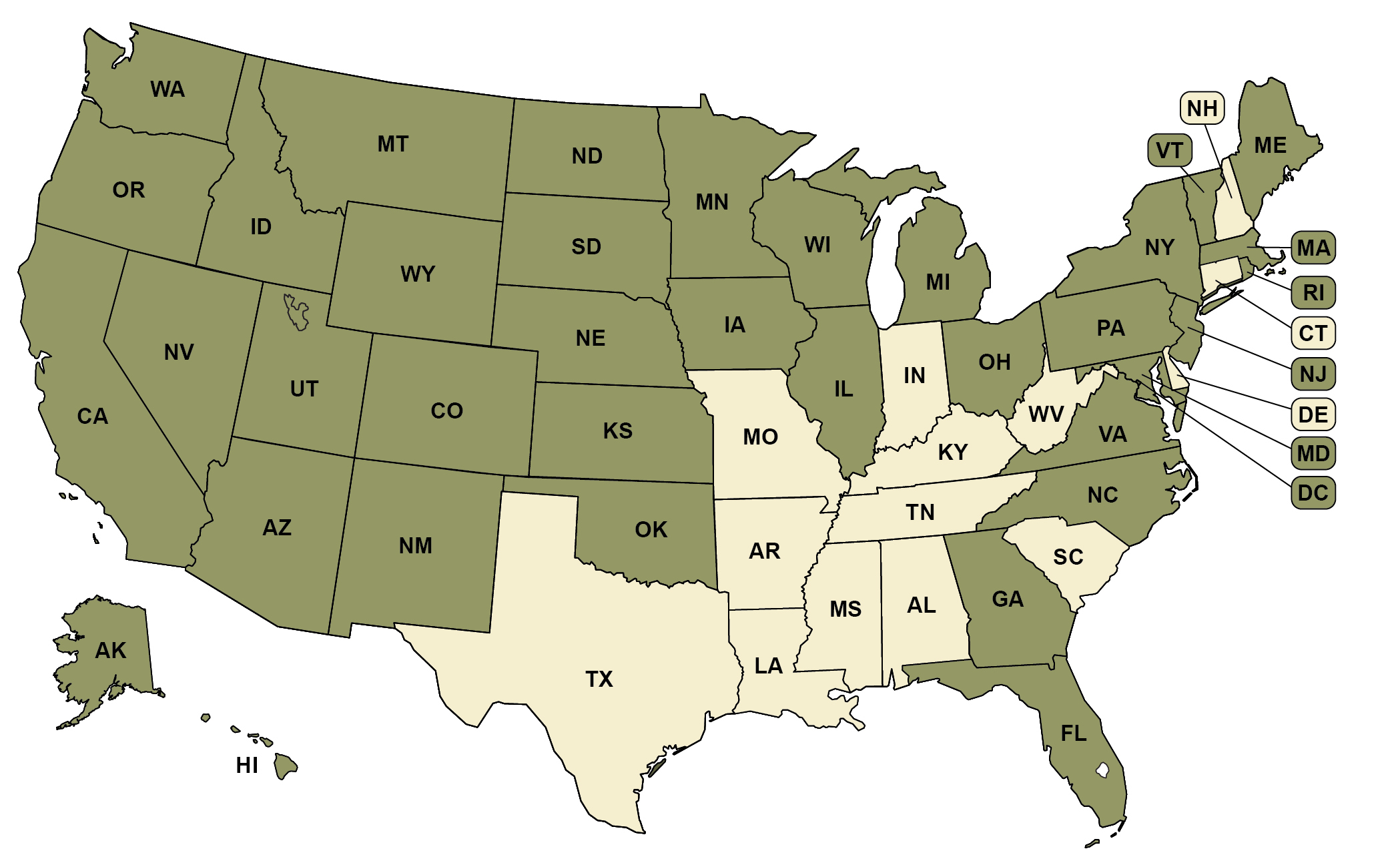Every state provides options for at least some voters to cast their ballots without having to appear in-person at a polling place. The majority of states allow all voters to request an absentee ballot be sent to them without providing a legal excuse, and a small but growing number of states conduct vote by mail elections, where all eligible voters are sent a mail ballot without having to make a request. The remaining states require voters to provide a legal excuse, such as illness or emergency, in order to vote by absentee ballot. This map shows the full landscape of both absentee and vote by mail policies, while the subsequent maps on this page focus on each policy individually.
-
State conducts vote by mail elections
(8 states + D.C.)
-
State does not require excuse to vote absentee
(36 states + D.C.)
-
State requires an excuse to vote absentee
(14 states)
Recommended citation: Movement Advancement Project. "Availability of No-Excuse Absentee Voting." https://www.mapresearch.org/democracy-maps/absentee_requirements. Accessed [day of access]
A small number of states conduct vote by mail elections, where every eligible voter is mailed a ballot without having to request one. Ballots are returned through the mail or to secure ballot drop boxes or election offices. Voters who wish to do so may still cast their ballot in-person at a polling place. Vote by mail elections allow voters more options to cast their ballot and may increase turnout as well as lower election administration costs.
Every state provides options for at least some voters to cast their ballots without having to appear in-person at a polling place. The majority of states allow all voters to request an absentee ballot be sent to them without providing a legal excuse, and a small but growing number of states conduct vote by mail elections, where all eligible voters are sent a mail ballot without having to make a request. The remaining states require voters to provide a legal excuse, such as illness or emergency, in order to vote by absentee ballot. This map shows the full landscape of both absentee and vote by mail policies, while the subsequent maps on this page focus on each policy individually.
-
State conducts vote by mail elections
(8 states + D.C.)
-
State does not conduct vote by mail elections
(42 states)
Recommended citation: Movement Advancement Project. "Vote by Mail Elections." https://www.mapresearch.org/democracy-maps/mail_voting_states. Accessed [day of access]
Breakdown by Population
*Note: These percentages reflect the voting-eligible population, as reported by the United States Election Project.
19 % of voting-eligible population lives in states that conduct vote by mail elections
81 % of voting-eligible population lives in states that do not conduct vote by mail elections
Absentee voting allows voters to cast their ballot without going to a traditional polling place, in most cases by voting through the mail. States differ in the requirements to qualify to vote absentee, with some states allowing any voter to do so and others requiring an excuse, such as a medical emergency. States that conduct all-mail elections, where every eligible voter is mailed a ballot, are categorized here as no-excuse absentee states.
Every state provides options for at least some voters to cast their ballots without having to appear in-person at a polling place. The majority of states allow all voters to request an absentee ballot be sent to them without providing a legal excuse, and a small but growing number of states conduct vote by mail elections, where all eligible voters are sent a mail ballot without having to make a request. The remaining states require voters to provide a legal excuse, such as illness or emergency, in order to vote by absentee ballot. This map shows the full landscape of both absentee and vote by mail policies, while the subsequent maps on this page focus on each policy individually.
-
State does not require an excuse to vote absentee
(36 states + D.C.)
-
State requires an excuse to vote absentee
(14 states)
Recommended citation: Movement Advancement Project. "Availability of No-Excuse Absentee Voting." https://www.mapresearch.org/democracy-maps/absentee_requirements. Accessed [day of access]
Breakdown by Population
*Note: These percentages reflect the voting-eligible population, as reported by the United States Election Project.
25 % of voting-eligible population lives in states that require an excuse to vote absentee
75 % of voting-eligible population lives in states that do not require an excuse to vote absentee




